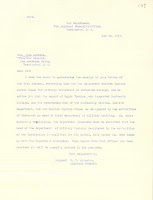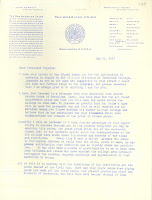 Zines: tiny, usually self-published, heavily illustrated, pamphlet-books that explore issues of identity, politics and labor. It's a "magazine" without the "maga," according to one of the zines in our collection. A lot of people come to Rauner to see our gold-edged, leather-covered books, written and read by the rich and famous--don't get me wrong, I love those too--but zines are the antidote for too much gilt. We have a selection of zines from the early 2000s that cover some of the following topics: black punk rockers, queer hookup culture, female fishermen in Alaska, a strike in a Tyson chicken slaughtering factory, and the situation of Israel and Palestine. Most of these are black and white, made on photocopiers and distributed for a few dollars an issue.
Zines: tiny, usually self-published, heavily illustrated, pamphlet-books that explore issues of identity, politics and labor. It's a "magazine" without the "maga," according to one of the zines in our collection. A lot of people come to Rauner to see our gold-edged, leather-covered books, written and read by the rich and famous--don't get me wrong, I love those too--but zines are the antidote for too much gilt. We have a selection of zines from the early 2000s that cover some of the following topics: black punk rockers, queer hookup culture, female fishermen in Alaska, a strike in a Tyson chicken slaughtering factory, and the situation of Israel and Palestine. Most of these are black and white, made on photocopiers and distributed for a few dollars an issue. Our zines are like confessions, whispered embraces about cultures that some of us belong to, or privileged views into identities we don't share. For example, Shotgun Seamstress (No. 2) describes itself as "a zine by and for Black punks, queers, misfits, feminists, artists & musicians, weirdos and the people who support us." An essay by Brontez Purnell, titled "why i will be a riot grrl till the day i fucking die," details Brontez's discovery of Riot Grrl music while a teenage in small-town Alabama--"THIS WAS WHAT MY LIFE WAS SUPPOSED TO BE." The essays, interviews and graphic work in Shotgun Seamstress create a tiny capsule of Black punk culture.
Our zines are like confessions, whispered embraces about cultures that some of us belong to, or privileged views into identities we don't share. For example, Shotgun Seamstress (No. 2) describes itself as "a zine by and for Black punks, queers, misfits, feminists, artists & musicians, weirdos and the people who support us." An essay by Brontez Purnell, titled "why i will be a riot grrl till the day i fucking die," details Brontez's discovery of Riot Grrl music while a teenage in small-town Alabama--"THIS WAS WHAT MY LIFE WAS SUPPOSED TO BE." The essays, interviews and graphic work in Shotgun Seamstress create a tiny capsule of Black punk culture. Some zines are almost indescribable. A tiny zine (No Snow Here, No. 11), barely four inches square, details the author's struggles with the impact of an abuse relationship, beginning with a demand: "All the times you started to say it then stopped yourself because it was too hard speak now." The rest of the zine dissolves into grainy black and white images, snatches of poetry and prose.
Some zines are almost indescribable. A tiny zine (No Snow Here, No. 11), barely four inches square, details the author's struggles with the impact of an abuse relationship, beginning with a demand: "All the times you started to say it then stopped yourself because it was too hard speak now." The rest of the zine dissolves into grainy black and white images, snatches of poetry and prose. Zines are meant to be held closely and examined, each reference sliding over your head or lodging in your heart, almost like cross-sections of a diary. Come to the Reading Room and settle yourself with our zine collection from the Booklyn Artists Alliance (Rare Book Z286.Z54 B66 2000Z).




